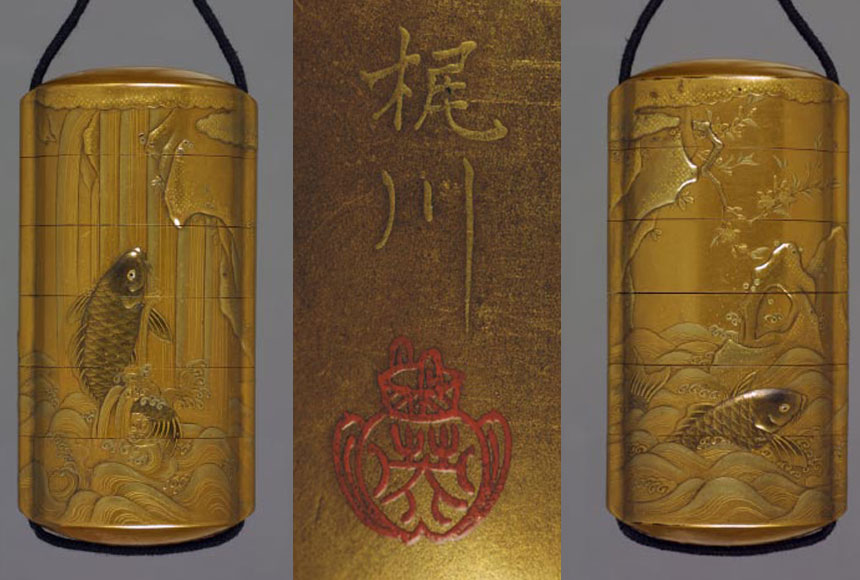Even before the advent of modern medicine, people universally had medicinal concerns and remedies. Today, we mostly rely on industrially-packaged medicines. As for carrying medicines on one’s person, the pillbox has been reduced to a purely utilitarian plastic container. Originally, it was a decorative object, often a precious enameled box. In the Far East, in 17th-century Japan, a particularly beautiful case was developed to carry medicine on one’s person: the cleverly designed and exquisitely decorated inrō.
The inrō is a stack of several usually oval boxes held together by a colorful silk cord laced through cord runners that are placed down one side, under the bottom, and then up the opposite side. This allows for easy unstacking the boxes to access their contents, wrapped in paper and secure in the tightly sealed containers: medicines, energizing and refreshing herbal concoctions, aphrodisiacs. The relatively long ends of the cord are secured to a decorative, carved toggle (netsuke) that would be slid down the two suspension cords and to the top of the inrō to keep it closed and held the stack of boxes together. The inrō was worn suspended from the sash (obi) on one’s back, on the right side, with the netsuke hooked over the top of the obi. In the Edo period(1603–1867), theinrō was elevated to the prestigious accessory of male dress and was worn by the samurai, aristocrats and wealthy burghers. Theinrō was usually made of wood and covered with lacquer decorated with gold powder (makie) and inlaid.Many motifs decorating theinrō were not only beautiful, but also symbolic and imbued with a magic power to protect the health of the owner and bring him good fortune, wealth, and longevity.
The featured golden inrō is one of 25 specimens in the collection of the Department of the Decorative Arts of the Middle and Far East at the National Museum in Wrocław. It is made of wood and covered with lacquer decorated with gold powder applied to the surface so that it looks like made of gold. The relief decoration of the inrō was inspired by the Chinese legend of carps swimming upstream the Yellow River, against the current and up its awesome waterfalls. The fish that managed to overcome these obstacles would change into dragons as they reached the end of their journey. Thus, the carp was the symbol of fortitude, heroism, and perseverance in pursuing one’s goals.
Dorota Róż-Mielecka, Keeper of the Decorative Arts of the Middle and Far East at the National Museum in Wrocław
Japanese case for holding medicine (inrō), Japan, the Kajikawa school, ca. mid-19th c.; fot. Arkadiusz Podstawka
— #stayathome – more entries ➸
